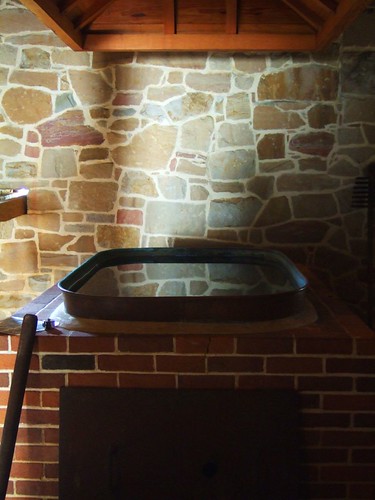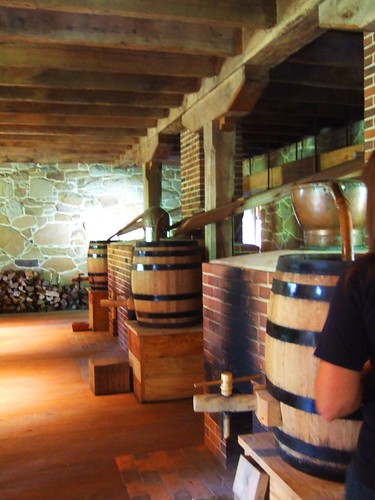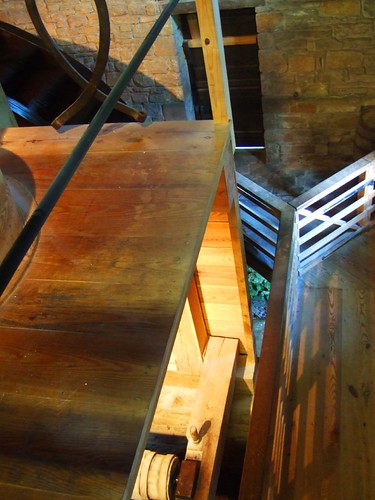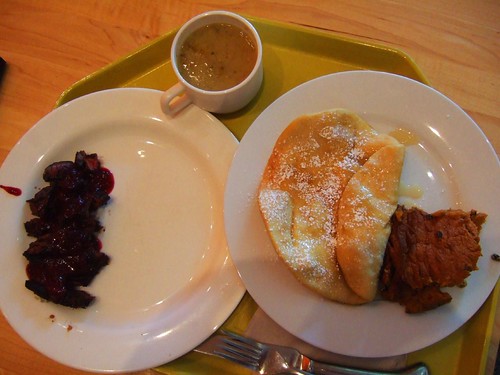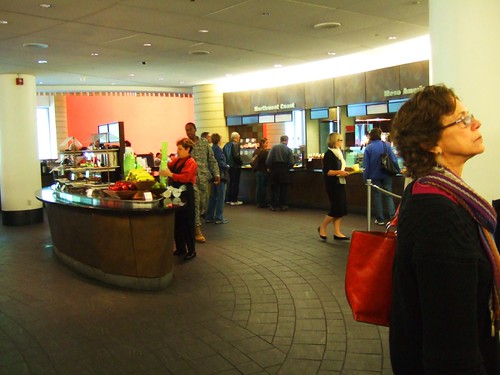 I treasure my new nutmeg grater.
I treasure my new nutmeg grater.On Wednesday, I braved the rain and the wind to go to Whisk, a delightful kitchen supply store in Brooklyn. I won a $25 gift certificate earlier this month, so I arrived with a list of small items I needed for my kitchen.
It warmed my heart to be able to pick out some tiny treasures. I got: A beautiful roll of brown parchment paper, which I think I may use to wrap my Christmas presents; a cookie cutter in the shape of an oak leaf and a jar of silver sanding sugar (also for Christmas presents); a candy thermometer, a tea ball, and (best of all) a nutmeg grater. I have wanted a nutmeg grater for years, and the one I got at Whisk is truly special. This nutmeg grater is the same make that I used in my other life in 1848. Hanging on a rack of completely modern and ordinary kitchen utensils, its punched-tin design seemed terribly out of place. I snatched it up and cradled it; I love it so.
When I returned home, a package had come for me in mail. A reader of this blog had mailed me some cookbooks: a two-volume set of 15th Century recipes called Take a Thousand Eggs or More by Cindy Renfrow. This reader had bought them several years ago at a renaissance festival, and never got around to using them. She decided they needed a new home.
I haven't done much work with Medieval or Renaissance cookery, but upon scanning the index, the heading "Spectacle Foods" caught my eye. The first entry: "Appraylere: a false pitcher made of pork, cheese and bread." What??? Meat Pitcher? Awwwwwesome!
 Box of meat! Sarah Lohman, your ship has come in.
Box of meat! Sarah Lohman, your ship has come in.Lastly, yesterday morning the Fed-Ex truck arrive with a box of free meat. How this free meat came to be is a long story, but it's from D'Artagnan, a local purveyor of elegant products. I got two tiny chickens, heritage breed bacon, buffalo steaks, duck foie gras, and two types of truffle butter. I've never even owned a truffle before!
I feel truly fortunate to have received all of these wonderful gifts; they are going to take me on some wonderful food adventures.







 It's "Handcrafted chocolate made from an authentic colonial recipe...
It's "Handcrafted chocolate made from an authentic colonial recipe...




